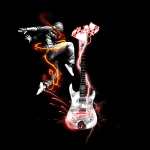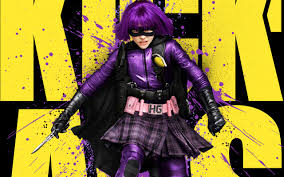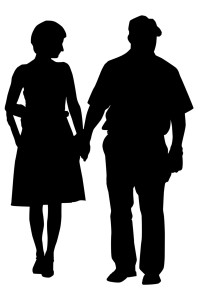Want to start a passionate debate? Just mention head hopping.
When I started writing, I bravely went to my first writing workshop. I was berated for head hopping between two characters in one scene. I was devastated. What had I done wrong? More importantly, why had I thought I could do this? I was too scared, too naive to defend the ‘rule’ I had broken.
But, what exactly, is head hopping?
It’s about using multiple points of view. It isn’t third person omniscient point of view (POV) where the omniscient narrator can peer into anyone’s head anytime. An omniscient narrator maintains a god-like distance, giving a more objective rather than a subjective telling. The story is told in the narrator’s voice who doesn’t word thoughts and feelings in the characters’ voices. It isn’t a story told in close third person which has multiple viewpoints where the view point changes only when scenes change. When this happens, the scene is written using that character’s voice.
Head Hopping occurs when the POV within a scene skips from one character to another within that scene. Unlike the omniscient narrator, the voice changes and is unique to each character. Let’s look at an example:
Stuart swirled the wine in his glass, sniffed it then set it on the table. He loved Rothchild’s Merlot but it was impossible to enjoy when Carrie was in the midst of a mood. He’d have to settle the matter, then they could enjoy their evening.
“We don’t need a dog yet,” he said. Darned nuisance they are, always needing to be walked, he thought.
“But they’re so cute,” Carrie insisted. She was tired of going for walks alone when Stuart worked late at the office. A puppy would get her out of the house and she’d meet more people. “And don’t you want to be happy?”
The waiter hesitated before coming to the table. He hated serving arguing couples because they tended not to tip well.
Three heads in one scene. If you don’t mind head hopping, you’ll find the different points of view entertaining. If you don’t like it, you’d likely prefer a root canal.
Handled clumsily (as in this example), it looks like the Stuart is psychic, for how can he know what everyone else sees or thinks? That’s the main problem with it for the point of view character loses the ability to read the other character’s cues such as body language and actions.
Do we need to know what everyone thinks? If the information isn’t germane to moving the plot along, is it important? In the example, do we need to know what the waiter thinks? It may be important if it compels Stuart to react in the moment, but how can Stuart react when he hasn’t been allowed to see the waiter’s reaction? Here’s a version staying in Stuart’s point of view:
Stuart swirled the wine in his glass, sniffed it then set it on the table. He loved Rothchild’s Merlot but it was impossible to enjoy when Carrie was in a mood. He’d have to settle the matter and then they could enjoy their evening.
“We don’t need a dog yet Carrie,” he said. “Maybe later?” He glanced toward the waiter and caught his eye. Maybe Carrie would be more reasonable once they ordered.
“But they’re so cute,” Carrie insisted.
Stuart shook his head, saw the waiter hesitate and glared at him. What was it with this fellow? The waiter hurried to the table with a cheat sheet in hand while fumbling for the pen in his pocket.
“What would you like, sir?” he asked.
“Ladies first,” Stuart snapped.
Carrie’s eyes danced and before she looked to her menu, a slight grin appeared. Why did she find shoddy service so amusing? Stuart tapped his fingers on the white linen signaling for her to order.
“Ma’am?”
“Oh yes,” Carrie ran her finger down the page of entrees while Stuart drummed his fingers into the table. The waiter’s eyes darted to Stuart and back to Carrie. “The Chicken Kiev,” she finally said.
The waiter’s Adam’s apple bobbed, sweat formed on his brow. “We’re out of that,” he squeaked.
Stuart’s fingers drummed louder.
“Chicken Marsala?”
“I’m afraid–”
Stuart snorted. “What kind of a place is this if you can’t give a lady what she wants?”
“I want a puppy.”
The spilled Merlot was a sea of red flowing toward Carrie.
By choosing not to head hop, I found the scene easier to write, to escalate tension using the simple formula of action-reaction-action. This is the key difference: head hopping doesn’t allow a reader to get fully submerged in the story. By and large, stories with head hopping tend to feel more shallow because the author can’t go deep into any character’s head beyond a thought about something. Yet, the technique is used and very successfully by a few authors such as MC Beaton, Nora Roberts, Alexander McCall Smith and others. Sometimes we don’t want to be or need to be fully submerged in a point of view. Sometimes, we just want the story told, the clues laid out, to know the entire landscape without feeling the grass tickle our toes.
Those who love head hopping know to expect it. If you chose to write this way, ask yourself if you can build a following who will love and expect it. If it works for you – do it! But do it well or you’ll be dismissed as an amateur who doesn’t know the craft.
Doing it well means making sure that the signals as to whose head we’re in are clear, that the emotional experience for the reader is retained as is suspension of disbelief. If the reader is jarred out of the story and forced to reread to get their bearings, the writing has failed. Drama and tension must continue to build. Provide seamless transitions and ensure the head hopping moves the scene along.
As it turns out, I’m not a head hopping writer and it isn’t employed in the YA fantasy writing I do. But I read a lot of mystery and when I find it, I’m willing to head hop for the sake of the story. It’s fun, amusing and even an easy read when done well. It’s a cinematic way of telling a story where I don’t need to or even want to get deeply involved with the characters. I enjoy the clues and the bird’s eye view while the sleuth solves the mystery.




